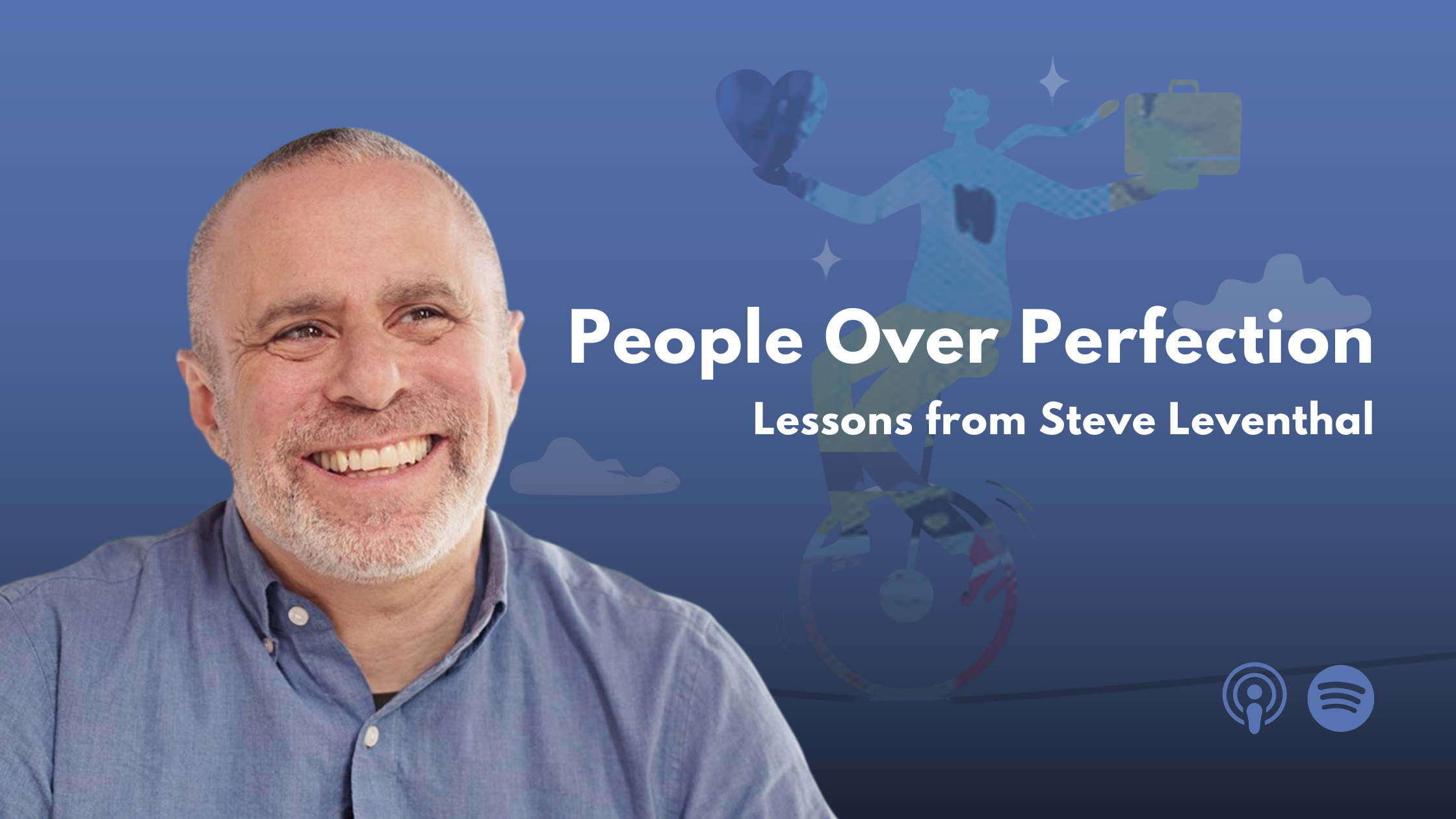In this episode of Meaningful Work Matters, we speak with Petra Kipfelsberger, Associate Professor for Leadership and Organizational Behaviour at BI Norwegian Business School.
With her extensive background in leadership research and coaching experience at the C-level, Kipfelsberger brings deep expertise on how leaders can inspire meaningful work. Her research focuses on how individuals and organizations thrive during uncertainty, with particular attention to visionary leadership, meaningful work, and coaching. Throughout the episode, Kipfelsberger shares evidence-based insights on how leaders can authentically communicate purpose and foster meaning, while avoiding behaviors that diminish employees' sense of significance.
Leaders Offer Meaning Rather Than Make It
Kipfelsberger introduces an important distinction in how leaders influence meaning.
She challenges the common assumption that leaders directly create meaning for employees. Instead, effective leaders present opportunities—what she calls "offerings"—that allow employees to discover their own sense of purpose.
This view recognizes that meaning remains personal while still acknowledging the leader's critical role in providing context and vision. When leaders understand this balance, they create environments where employees connect their work to larger purposes without forcing that connection.
Authentic Leadership Starts With Personal Meaning
Kipfelsberger builds on this foundation with a straightforward principle: leaders need to find meaning in their own work before they can help others find it. She puts it simply:
"You cannot give what you don't have."
When leaders genuinely find their work meaningful, their communication becomes naturally energetic and convincing. Their visionary leadership emerges as authentic expression rather than rehearsed technique. Employees quickly sense when a leader truly believes in the vision versus when they're just going through the motions.
Timing Matters
Kipfelsberger's research reveals a surprising insight about when visionary leadership makes the most impact. She found that a leader's vision and purpose communication matters most in the first years of working with team members—with this influence extending up to six years.
This finding has clear implications for how we think about onboarding employees. Rather than treating it as a brief orientation, effective leaders view it as an extended journey of meaning development that shapes an employee's entire experience.
During these early years, consistently communicating vision and purpose creates a foundation for long-term engagement. As time passes, employees develop their own sources of meaning and rely less on their leader's vision.
The Dark Side: How Leaders Kill Meaning
The conversation then shifts to what Kipfelsberger calls "meaning killing"—leadership behaviors that diminish employees' sense of purpose. She offers a common example: when a manager assigns an urgent task with a random deadline, then fails to acknowledge when employees complete it.
Other meaning-damaging behaviors include not providing feedback, ignoring contributions, and trying to dictate meaning rather than offering it.
This concept shares similarities with what Zach Mercurio calls "anti-mattering"—when employees feel invisible or insignificant in their workplace. Over time, these behaviors make meaningful work harder to maintain. Even inspiring visions fall apart when daily interactions communicate to employees that their work doesn't matter.
What Would Viktor Frankl Do?
The discussion explores how Viktor Frankl's ideas about meaning apply to leadership. Kipfelsberger has studied Frankl extensively, and she explains how his concept of self-transcendence transforms leadership approaches.
Frankl's view shifts focus from self-actualization to self-transcendence—finding purpose by contributing to something beyond oneself. This positions leadership as service rather than self-centered achievement. As Kipfelsberger notes, "It's not about me. It's about giving to others, and then this will help me find meaning as a byproduct."
This connects to visionary leadership, as good leaders help employees see how their work contributes to something larger. Frankl's perspective on transcendence echoes themes explored in our conversation with Scott Barry Kaufman, who similarly challenges traditional notions of Maslow's hierarchy and emphasizes the importance of serving something beyond ourselves.
Frankl's emphasis on finding meaning in specific moments also helps leaders connect daily tasks to broader purpose.
Family Businesses Show Meaningful Leadership in Action
Kipfelsberger next shares research on family-run businesses, where employees report higher satisfaction levels. She found this stems from the authentic passion and long-term vision that family leaders communicate.
Family businesses operate with a different time perspective—they make decisions with future generations in mind. This creates a culture valuing people and well-being over short-term results.
As Soren notes in the conversation, this connects to Indigenous wisdom like the "seven generations" philosophy, which teaches that decisions made today should consider their impact on descendants seven generations into the future—roughly 150 years. This principle encourages long-term stewardship, sustainability, and responsibility that extends far beyond quarterly profits.
In family businesses, this similar multigenerational thinking shapes daily operations and creates authenticity that resonates with employees.
Practical Leadership Strategies
Kipfelsberger concludes with practical approaches for leaders who want to foster meaningful work:
Start with authentic communication about your purpose, especially during early interactions with team members
Frame messages positively instead of using negations
Create space for meaningful dialogue, possibly through coaching
Connect big-picture vision with concrete, immediate actions
Provide timely feedback and acknowledgment
These strategies help leaders avoid becoming "meaning killers" and create environments where employees discover their own sense of purpose.
Kipfelsberger emphasizes that fostering meaning doesn't require grand gestures - simple acknowledgments and regular feedback can make a significant difference in how employees experience their work, ultimately leading to greater satisfaction and engagement.
Resources for Further Exploration
Kipfelsberger, P., & Kark, R. (2018). 'Killing me softly with his/her song': How leaders dismantle followers' sense of work meaningfulness. Frontiers in Psychology, 9, 654.
Kipfelsberger, P., Braun, S., Fladerer, M. P., & Dragoni, L. (2022). Developing authenticity: A quasi-experimental investigation. Personality and Individual Differences, 198, 111825.
Viktor Frankl's book "Man's Search for Meaning"
























